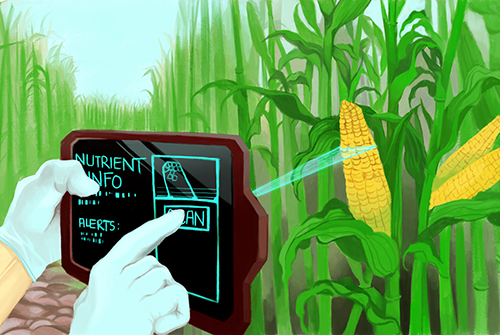 Research Worth Consuming
Research Worth Consuming
Texas A&M AgriLife Research scientists have demonstrated a quick, accurate and portable way to scan produce and crops for numerous consumer and agricultural purposes.
Using Raman spectroscopy, the research team can measure how molecules scatter harmless laser light to efficiently determine the levels of protein, carbohydrates, fiber and carotenoids within corn kernels without destroying the samples. “When it comes to personal diet, if I have this technology, I can scan food that I consume and determine its nutrient value on the spot,” said Dmitry Kurouski, assistant professor of biochemistry and biophysics in the College of Agriculture and Life Sciences and leader of the research team.
The technique can also provide farmers with a proactive and cost-effective method of detecting problems in crop production. For example, using the technology, the team successfully identified varieties of corn plants growing in a field and detected citrus greening disease before visible symptoms appeared.
“This method could eventually be used to quickly estimate the economic value of grain in a field or predict grain’s starch content, significantly changing the economy for farmers and consumers,” Kurouski added. The researchers are now hoping to commercialize the technique so others can begin using the tool.